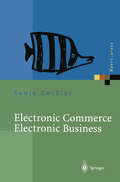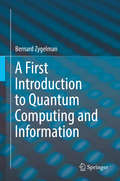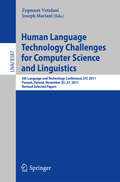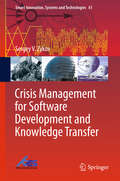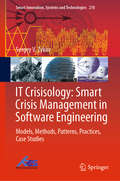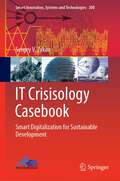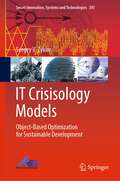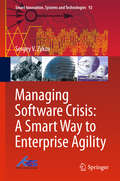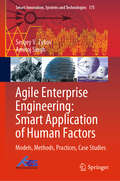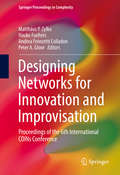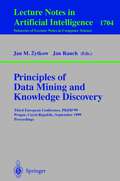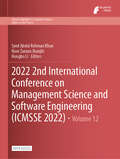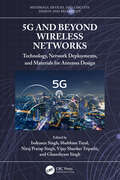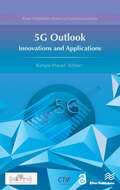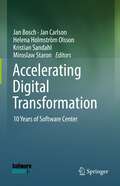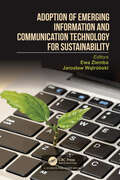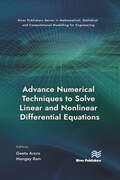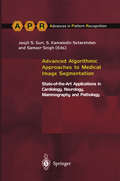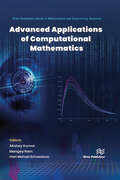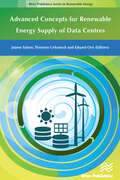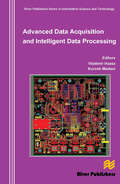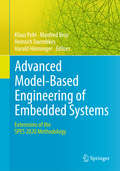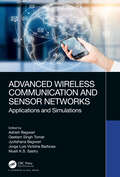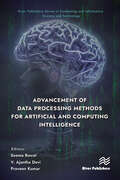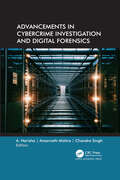- Table View
- List View
Electronic Commerce Electronic Business: Strategische und operative Einordnung, Techniken und Entscheidungshilfen (Xpert.press)
by Sonja Zwißler Andreas UremovicDer Leser erhält mit diesem Buch eine umfassende Darstellung aktueller Entwicklungen bei Electronic Business und Electronic Commerce Systemen. Vier Schwerpunkte werden systematisch dargestellt: eine globale und gut verständliche Einführung in die Begriffswelt mit praktischen Beispielen; eine ausführliche Darstellung der technischen Infrastruktur, die Beziehungen zwischen Netzwerken, Diensten, Protokollen, Middleware und Business-Objekten aufzeigt; eine praktische Hilfestellung für die Planung eigener Dienste mit einem detaillierten Kriterienkatalog zur Auswahl geeigneter Softwarelösungen und eine Analyse am Markt verfügbarer Systeme von BroadVision, IBM, Intershop und SAP. Das Buch zeichnet sich durch seine praxisnahe Analyse von Hintergründen und Zusammenhängen aus, die es dem Leser ermöglicht, Entwicklungen bei E-Business Systemen objetiv einzuordnen und zu bewerten.
A First Introduction to Quantum Computing and Information
by Bernard ZygelmanThis book addresses and introduces new developments in the field of Quantum Information and Computing (QIC) for a primary audience of undergraduate students. Developments over the past few decades have spurred the need for QIC courseware at major research institutions. This book broadens the exposure of QIC science to the undergraduate market. The subject matter is introduced in such a way so that it is accessible to students with only a first-year calculus background. Greater accessibility allows a broader range of academic offerings. Courses, based on this book, could be offered in the Physics, Engineering, Math and Computer Science departments. This textbook incorporates Mathematica-based examples into the book. In this way students are allowed a hands-on experience in which difficult abstract concepts are actualized by simulations. The students can ‘turn knobs" in parameter space and explore how the system under study responds. The incorporation of symbolic manipulation software into course-ware allows a more holistic approach to the teaching of difficult concepts. Mathematica software is used here because it is easy to use and allows a fast learning curve for students who have limited experience with scientific programming.
Human Language Technology Challenges for Computer Science and Linguistics: 5th Language and Technology Conference, LTC 2011, Poznań, Poland, November 25--27, 2011, Revised Selected Papers (Lecture Notes in Computer Science #8387)
by Zygmunt Vetulani and Joseph MarianiThis book constitutes the refereed proceedings of the 5th Language and Technology Conference: Challenges for Computer Science and Linguistics, LTC 2011, held in Poznan, Poland, in November 2011. The 44 revised and in many cases substantially extended papers presented in this volume were carefully reviewed and selected from 111 submissions. The focus of the papers is on the following topics: speech, parsing, computational semantics, text analysis, text annotation, language resources: general issues, language resources: ontologies and Wordnets and machine translation.
Crisis Management for Software Development and Knowledge Transfer (Smart Innovation, Systems and Technologies #61)
by Sergey V. ZykovThis well structured book discusses lifecycle optimization of software projects for crisis management by means of software engineering methods and tools. Its outcomes are based on lessons learned from the software engineering crisis which started in the 1960s. The book presents a systematic approach to overcome the crisis in software engineering depends which not only depends on technology-related but also on human-related factors. It proposes an adaptive methodology for software product development, which optimizes the software product lifecycle in order to avoid “local” crises of software production. The general lifecycle pattern and its stages are discussed, and their impact on the time and budget of the software product development is analyzed. The book identifies key advantages and disadvantages for various models selected and concludes that there is no “silver bullet”, or universal model, which suits all software products equally well. It approaches software architecture in terms of process, data and system perspectives and proposes an incremental methodology for crisis-agile development of large-scale, distributed heterogeneous applications. The book introduces a number of specialized approaches which are widely used in industry but are often ignored in general writings because of their vendor-specificity. In doing so, the book builds a helpful bridge from academic conceptions of software engineering to the world of software engineering practice. With its systematic coverage of different software engineering methodologies and the presented rich systems engineering examples the book will be beneficial for a broader audience.
IT Crisisology: Models, Methods, Patterns, Practices, Case Studies (Smart Innovation, Systems and Technologies #210)
by Sergey V. ZykovThis book focuses on crisis management in software development which includes forecasting, responding and adaptive engineering models, methods, patterns and practices. It helps the stakeholders in understanding and identifying the key technology, business and human factors that may result in a software production crisis. These factors are particularly important for the enterprise-scale applications, typically considered very complex in managerial and technological aspects and therefore, specifically addressed by the discipline of software engineering. Therefore, this book throws light on the crisis responsive, resilient methodologies and practices; therewith, it also focuses on their evolutionary changes and the resulting benefits.
IT Crisisology Casebook: Smart Digitalization for Sustainable Development (Smart Innovation, Systems and Technologies #300)
by Sergey V. ZykovThe book focuses on the real-world case-based crisis management in digital product development. This includes forecasting, responding, and agile engineering/management methods, patterns, and practices for sustainable development. This book introduces a set of case studies for sustainability in management as a blend, the components of which have been carefully selected from a few domains adjacent to digital production such as IT-intensive operation, human resource management, and knowledge engineering, to name a few. The key ingredients of this crisis management framework include information management, tradeoff optimization, agile product development, and knowledge transfer. The case studies this book features will help the stakeholders in understanding and identifying the key technology, business, and human factors that may likely result in a digital production crisis, i.e., critically affect the organization outcomes in terms of successful digitalization and sustainable development. These factors are particularly important for the large-scale applications, typically considered very complex in managerial and technological aspects, and, therefore, specifically addressed by the discipline of IT crisisology.
IT Crisisology Models: Object-Based Optimization for Sustainable Development (Smart Innovation, Systems and Technologies #381)
by Sergey V. ZykovThe book focuses on modeling real-world crisis management in digital product development. This includes models and methods for forecasting, responding, and agile engineering/managing for sustainable product development. This book suggests an approach that contains principles, formal models, and semi-formal practice-oriented methods, patterns and techniques to efficiently manage these crises and provide sustainable development. The book also introduces a set of principles, models, and methods for sustainable management as a blend, the components of which have been carefully selected from a few domains adjacent to digital production such as IT-intensive operation, human resource management, and knowledge engineering, to name a few. The key ingredients of this crisis management framework include smart data modeling, trade-off optimizing, agile product controlling, and knowledge transferring.
Managing Software Crisis: A Smart Way to Enterprise Agility (Smart Innovation, Systems and Technologies #92)
by Sergey V. ZykovThis book discusses smart, agile software development methods and their applications for enterprise crisis management, presenting a systematic approach that promotes agility and crisis management in software engineering. The key finding is that these crises are caused by both technology-based and human-related factors. Being mission-critical, human-related issues are often neglected. To manage the crises, the book suggests an efficient agile methodology including a set of models, methods, patterns, practices and tools. Together, these make a survival toolkit for large-scale software development in crises. Further, the book analyses lifecycles and methodologies focusing on their impact on the project timeline and budget, and incorporates a set of industry-based patterns, practices and case studies, combining academic concepts and practices of software engineering.
Agile Enterprise Engineering: Models, Methods, Practices, Case Studies (Smart Innovation, Systems and Technologies #175)
by Sergey V. Zykov Amitoj SinghThis concise book provides a survival toolkit for efficient, large-scale software development. Discussing a multi-contextual research framework that aims to harness human-related factors in order to improve flexibility, it includes a carefully selected blend of models, methods, practices, and case studies. To investigate mission-critical communication aspects in system engineering, it also examines diverse, i.e. cross-cultural and multinational, environments. This book helps students better organize their knowledge bases, and presents conceptual frameworks, handy practices and case-based examples of agile development in diverse environments. Together with the authors’ previous books, "Crisis Management for Software Development and Knowledge Transfer" (2016) and "Managing Software Crisis: A Smart Way to Enterprise Agility" (2018), it constitutes a comprehensive reference resource adds value to this book.
Designing Networks for Innovation and Improvisation: Proceedings of the 6th International COINs Conference (Springer Proceedings in Complexity)
by Matthäus P. Zylka Hauke Fuehres Andrea Fronzetti Colladon Peter A. GloorThis volume is focused on the emerging concept of Collaborative Innovation Networks (COINs). COINs are at the core of collaborative knowledge networks, distributed communities taking advantage of the wide connectivity and the support of communication technologies, spanning beyond the organizational perimeter of companies on a global scale. It includes the refereed conference papers from the 6th International Conference on COINs, June 8-11, 2016, in Rome, Italy. It includes papers for both application areas of COINs, (1) optimizing organizational creativity and performance, and (2) discovering and predicting new trends by identifying COINs on the Web through online social media analysis. Papers at COINs16 combine a wide range of interdisciplinary fields such as social network analysis, group dynamics, design and visualization, information systems and the psychology and sociality of collaboration, and intercultural analysis through the lens of online social media. They will cover most recent advances in areas from leadership and collaboration, trend prediction and data mining, to social competence and Internet communication.
Principles of Data Mining and Knowledge Discovery: Third European Conference, PKDD'99 Prague, Czech Republic, September 15-18, 1999 Proceedings (Lecture Notes in Computer Science #1704)
by Jan Zytkow Jan RauchThis book constitutes the refereed proceedings of the Third European Conference on Principles and Practice of Knowledge Discovery in Databases, PKDD'99, held in Prague, Czech Republic in September 1999.The 28 revised full papers and 48 poster presentations were carefully reviewed and selected from 106 full papers submitted. The papers are organized in topical sections on time series, applications, taxonomies and partitions, logic methods, distributed and multirelational databases, text mining and feature selection, rules and induction, and interesting and unusual issues.
2022 2nd International Conference on Management Science and Software Engineering (Atlantis Highlights in Computer Sciences #12)
This is an open access book.Management science and engineering is a systematic discipline that combines modern information technology and digital technology, and then uses some related discipline methods, such as systems science, mathematical science, economics and behavioral science, and engineering methods. After analyzing and researching some problems arising from social economy, engineering, education, finance, etc., and making corresponding countermeasures. The main purpose is to achieve control and planning, decision-making and adjustment in social, economic, education, engineering and other aspects, and then make improvements, and finally organize and coordinate. The relevant departments can be combined to achieve system management, so that the allocation of resources and the Management can be rationally optimized, so that individual functions can play the greatest role, minimize resource consumption, and maximize the optimal allocation of resources. This is also the ultimate research purpose.Liangliang Wang said:" Management is the productive force, which promotes the development of the country, society and enterprise. The relationship between management practice and management science is the relationship between theory and practice. The research on management science helps to improve the level of management, and then promote the development of the country, society and enterprises. On the other hand, management practice changes with the continuous progress of the times. It is necessary to study the current situation and trend of management science in the new era, which will help to clarify the future development direction of the discipline and discover the deficiencies in management scientific research and grasp it. The focus of management science research, thereby promoting research in management science."Therefore, it is necessary to create a space for management science practitioners, engineering practitioners, researchers and related enthusiasts to gather and discuss this current issue.The 2nd International Conference on Management Science and Software Engineering (ICMSSE 2022) aims to accommodate this need, as well as to:1. provide a platform for experts and scholars, engineers and technicians in the field of management and software engineering to share scientific research achievements and cutting-edge technologies2. understand academic development trends, broaden research ideas, strengthen academic research and discussion, and promote the industrialization cooperation of academic achievements3. Promote the institutionalization and standardization of management science through modern researchThe conference will focus on software processing and information systems, combining research directions in the field of management. ICMSSE International Conference on Management Science and Software Engineering welcomes papers dealing with management systems research, software programming, management systems optimization, information systems management, etc.The 2nd International Conference on Management Science and Software Engineering (ICMSSE 2022) will be held in Chongqing on July 15-17, 2022. The conference sincerely invites experts, scholars, business people and other relevant personnel from domestic and foreign universities, research institutions to participate in the exchange.
5G and Beyond Wireless Networks: Technology, Network Deployments, and Materials for Antenna Design (Materials, Devices, and Circuits)
5G and Beyond Wireless Networks: Technology, Network Deployments, and Materials for Antenna Design offers a comprehensive overview of 5G and beyond 5G wireless networks along with emerging technologies that support the design and development of wireless networks. It also includes discussions on various materials used for practical antenna design which are suitable for 5G, beyond 5G applications, and cell-free massive MIMO systems.The book discusses the latest techniques used in 5G and beyond 5G (B5G) communication, such as non-orthogonal multiple access (NOMA), device-to-device (D2D) communication, 6G ultra-dense O-RAN, rate-splitting multiple access (RSMA), simultaneous wireless information and power transfer (SWIPT), massive multiple input multiple output (mMIMO), and cell-free massive MIMO systems, which are explained in detail for 5G and beyond cellular networks. The description of NOMA and their benefit for 5G and beyond networks is also addressed along with D2D communication for next generation cellular networks. RSMA technique is also explained for 6G communication. Detailed descriptions for the design and development of 5G and beyond networks over various techniques are included. The materials specification to design antenna for 5G application are also given.The role of metalens in designing effective antennas and material specifications for 5G applications is explained in this book. Apart from the above emerging topics, this book also gives ideas about intelligent communication, Internet of Multimedia Things (IOMT), millimeter-wave MIMO-UFMC, and fog computing cloud networks. The last chapter gives details about the legal frameworks for 5G technology for responsible and sustainable deployment. Overall, this book may benefit network design engineers and researchers working in the area of next generation cellular networks.The contents of this book will be helpful for young researchers and master students, and network design engineers who are working in the area of next generation cellular networks.
5G Outlook – Innovations and Applications
5G Outlook - Innovations and Applications is a collection of the recent research and development in the area of the Fifth Generation Mobile Technology (5G), the future of wireless communications. Plenty of novel ideas and knowledge of the 5G are presented in this book as well as divers applications from health science to business modeling. The authors of different chapters contributed from various countries and organizations. The chapters have also been presented at the 5th IEEE 5G Summit held in Aalborg on July 1, 2016. The book starts with a comprehensive introduction on 5G and its need and requirement. Then millimeter waves as a promising spectrum to 5G technology is discussed. The book continues with the novel and inspiring ideas for the future wireless communication usage and network. Further, some technical issues in signal processing and network design for 5G are presented. Finally, the book ends up with different applications of 5G in distinct areas. Topics widely covered in this book are: • 5G technology from past to present to the future• Millimeter- waves and their characteristics• Signal processing and network design issues for 5G• Applications, business modeling and several novel ideas for the future of 5G
Accelerating Digital Transformation: 10 Years of Software Center
This book celebrates the 10-year anniversary of Software Center (a collaboration between 18 European companies and five Swedish universities) by presenting some of the most impactful and relevant journal or conference papers that researchers in the center have published over the last decade. The book is organized around the five themes around which research in Software Center is organized, i.e. Continuous Delivery, Continuous Architecture, Metrics, Customer Data and Ecosystems Driven Development, and AI Engineering. The focus of the Continuous Delivery theme is to help companies to continuously build high quality products with the right degree of automation. The Continuous Architecture theme addresses challenges that arise when balancing the need for architectural quality and more agile ways of working with shorter development cycles. The Metrics theme studies and provides insight to understand, monitor and improve software processes, products and organizations. The fourth theme, Customer Data and Ecosystem Driven Development, helps companies make sense of the vast amounts of data that are continuously collected from products in the field. Eventually, the theme of AI Engineering addresses the challenge that many companies struggle with in terms of deploying machine- and deep-learning models in industrial contexts with production quality. Each theme has its own part in the book and each part has an introduction chapter and then a carefully selected reprint of the most important papers from that theme. This book mainly aims at researchers and advanced professionals in the areas of software engineering who would like to get an overview about the achievement made in various topics relevant for industrial large-scale software development and management – and to see how research benefits from a close cooperation between industry and academia.
Adoption of Emerging Information and Communication Technology for Sustainability
This book represents an important voice in the discourse on the adoption of emerging ICT for sustainability. It focuses on how emerging ICT acts as a crucial enabler of sustainability, offering new forward-looking approaches to this field. The book explores how emerging ICT adoption drives sustainability efforts in business and public organizations, promoting ecological, economic, social, cultural, and political sustainability. The book's theoretical discussions, conceptual approaches, empirical studies, diverse perspectives, and views make it a valuable and comprehensive reference work. Appealing to both researchers and practitioners, this book provides significant areas for research and practice related to the contribution of emerging ICT adoption to sustainability. It also suggests vital considerations for programming and building sustainable development-driven emerging ICT adoption. Readers will find answers to important contemporary questions, such as: What are the concepts, frameworks, models, and approaches to enhance sustainable development through the adoption of emerging ICT? How does the adoption of emerging ICT influence sustainability? How can emerging ICT be adopted to enhance sustainability? What are the current practices and successful cases of emerging ICT adoption for sustainability? What factors influence emerging ICT adoption to enhance sustainability?
Advance Numerical Techniques to Solve Linear and Nonlinear Differential Equations (River Publishers Series in Mathematical, Statistical and Computational Modelling for Engineering)
Real-world issues can be translated into the language and concepts of mathematics with the use of mathematical models. Models guided by differential equations with intuitive solutions can be used throughout engineering and the sciences. Almost any changing system may be described by a set of differential equations. They may be found just about anywhere you look in fields including physics, engineering, economics, sociology, biology, business, healthcare, etc. The nature of these equations has been investigated by several mathematicians over the course of hundreds of years and, consequently, numerous effective methods for solving them have been created. It is often impractical to find a purely analytical solution to a system described by a differential equation because either the system itself is too complex or the system being described is too vast. Numerical approaches and computer simulations are especially helpful in such systems. The content provided in this book involves real-world examples, explores research challenges in numerical treatment, and demonstrates how to create new numerical methods for resolving problems. Theories and practical applications in the sciences and engineering are also discussed. Students of engineering and applied mathematics, as well as researchers and engineers who use computers to solve problems numerically or oversee those who do, will find this book focusing on advance numerical techniques to solve linear and nonlinear differential equations useful.
Advanced Algorithmic Approaches to Medical Image Segmentation: State-of-the-Art Applications in Cardiology, Neurology, Mammography and Pathology (Advances in Computer Vision and Pattern Recognition)
Medical imaging is an important topic and plays a key role in robust diagnosis and patient care. It has experienced an explosive growth over the last few years due to imaging modalities such as X-rays, computed tomography (CT), magnetic resonance (MR) imaging, and ultrasound. This book focuses primarily on model-based segmentation techniques, which are applied to cardiac, brain, breast and microscopic cancer cell imaging. It includes contributions from authors working in industry and academia, and presents new material.
Advanced Applications of Computational Mathematics
This book “Advanced Applications of Computational Mathematics” covers multidisciplinary studies containing advanced research in the field of computational and applied mathematics. The book includes research methodology, techniques, applications, and algorithms. The book will be very useful to advanced students, researchers and practitioners who are involved in the areas of computational and applied mathematics and engineering.
Advanced Concepts for Renewable Energy Supply of Data Centres
The rapid increase of cloud computing, high performance computing (HPC) and the vast growth in Internet and Social Media use have aroused the interest in energy consumption and the carbon footprint of Data Centres. Data Centres primarily contain electronic equipment used for data processing (servers), data storage (storage equipment), and communications (network equipment). Collectively, this equipment processes, stores, and transmits digital information and is known as information technology (IT) equipment. Advanced Concepts for Renewable Energy Supply of Data Centres introduces a number of technical solutions for the supply of power and cooling energy into Data Centres with enhanced utilisation of renewable energy sources in order to achieve low energy Data Centres. Because of the high energy density nature of these unique infrastructures, it is essential to implement energy efficiency measures and reduce consumption before introducing any renewable energy source. A holistic approach is used with the objective of integrating many technical solutions such as management of the IT (Information Technology) load, efficient electrical supply to the IT systems, Low-Ex air-conditioning systems, interaction with district heating and cooling networks, re-use of heat, free cooling (air, seawater, groundwater), optimal use of heat and cold storage, electrical storage and integration in smart grids. This book is therefore a catalogue of advanced technical concepts that could be integrated into Data Centres portfolio in order to increase the overall efficiency and the share of renewable energies in power and cooling supply. Based on dynamic energy models implemented in TRNSYS some concepts are deeply evaluated through yearly simulations. The results of the simulation are illustrated with Sankey charts, where the energy flows per year within the subsystems of each concept for a selected scenario are shown, and graphs showing the results of parametric analysis. A set of environmental metrics (as the non-renewable primary energy) and financial metrics (CAPEX and OPEX) as well of energy efficiency metrics like the well-known PUE, are described and used to evaluate the different technical concepts.
Advanced Data Acquisition and Intelligent Data Processing
DAQ and data processing is a basic part of all automated production systems, diagnostic systems, watching over quality of production, energy distribution, transport control or in various other areas. Demands on the speed, accuracy and reliability increase in general. It is possible to achieve not only using superior (but also more expensive) hardware, but also applying advanced data acquisition and intelligent data processing. It deals e.g. optimal data fusion of a number of sensors, new stochastic methods for accuracy increasing, new algorithms for acceleration of data processing, etc. These are the grounds for publishing this book. Advanced Data Acquisition and Intelligent Data Processing offers 10 up-to-date examples of different applications of advanced data acquisition and intelligent data processing used in monitoring, measuring and diagnostics systems. The book arose based on the most interesting papers from this area published at IDAACS?2013 conference. However, the indivudual chapters include not only designed solution in wider context but also relevant theoretical parts, achieved results and possible future ways.Technical topics discussed in this book include: • advanced methods of data acquisition in application that are not routine;• measured data fusion using up-to-date advanced data processing;• nonlinear dynamical systems identification;• multidimensional image processing.Advanced Data Acquisition and Intelligent Data Processing is ideal for personnel of firms deals with advanced instrumentation, energy consumption monitoring, environment monitoring, non-descructive diagnostics robotics, etc., as well as academic staff and postgraduate students in electrical, control and computer engineering.Content: 1. Introduction; 2. Waveform acquisition with resolutions exceeding those of the ADC employed; 3. Different Disaggregation Algorithms in Non-Intrusive Home Energy Monitoring Systems; 4. Design and testing of an electronic nose system sensitive to the aroma of truffles; 5. DAQ System for Ultrasonic Transducer Evaluation under Spread Spectrum Excitation; 6. Optimal Data Fusion in Decentralized Stochastic Unknown Input Observers; 7. Odor Classification by Neural Networks; 8. ANFIS Based Approach for Improved Multisensors Signal Processing; 9. Neuro-Fuzzy Sensor's Linearization Based FPGA; 10. Interpolation Method of Nonlinear Dynamical Systems Identification Based on Volterra Model in Frequency Domain ; 11. Training Cellular Automata for Hyperspectral Image Segmentation
Advanced Model-Based Engineering of Embedded Systems: Extensions of the SPES 2020 Methodology
This book provides a comprehensive introduction into the SPES XT modeling framework. Moreover, it shows the applicability of the framework for the development of embedded systems in different industry domains and reports on the lessons learned. It also describes how the SPES XT modeling framework can be tailored to meet domain and project-specific needs. The book is structured into four parts: Part I “Starting Situation” discusses the status quo of the development of embedded systems with specific focus on model-based engineering and summarizes key challenges emerging from industrial practice. Part II “Modeling Theory” introduces the SPES XT modeling framework and explains the core underlying principles. Part III “Application of the SPES XT Framework” describes the application of the SPES XT modeling framework and how it addresses major industrial challenges. Part IV “Evaluation and Technology Transfer” assess the impact of the SPES XT modeling framework and includes various exemplary applications from automation, automotive, and avionics. Overall, the SPES XT modeling framework offers a seamless model-based engineering approach. It addresses core challenges faced during the engineering of embedded systems. Among others, it offers aligned and integrated techniques for the early validation of engineering artefacts (including requirements and functional and technical designs), the management of product variants and their variability, modular safety assurance and deployment of embedded software.
Advanced Wireless Communication and Sensor Networks: Applications and Simulations
This book covers wireless communication, security issues, advanced wireless sensor networks (WSNs), routing protocols of WSNs with cross-layer solutions, emerging trends in the advanced WSNs, power management, distributed sensing and data gathering techniques for WSNs, WSNs security, applications, research of advanced WSNs with simulation results, and simulation tools for WSNs. Features: Covers technologies supporting advanced wireless communication systems, sensor networks, and the conceptual development of the subject. Discusses advanced data gathering and sharing/ distributed sensing techniques with its business applicability. Includes numerous worked-out mathematical equations and formulas, as well as essential principles including figures, illustrations, algorithms, and flow charts. Provides pervasive background knowledge including both wireless communications and WSNs. Covers wireless networks as well as sensor network models in detail. This book is aimed at graduate students, researchers, and academics working in the field of computer science, wireless communication technology, and advanced WSNs.
Advancement of Data Processing Methods for Artificial and Computing Intelligence (River Publishers Series in Computing and Information Science and Technology)
This book emphasizes the applications of advances in data processing methods for Artificial Intelligence in today's fast-changing world, as well as to serve society through research, innovation, and development in this field. This book is applicable to a wide range of data that contribute to data science concerns and can be used to promote research in this high-potential new field. People's perceptions of the world and how they conduct their lives have changed dramatically as a result of technological advancements. The world has been gripped by technology, and the advances that are being made every day are undeniably transforming the planet. In the domains of Big Data, engineering, and data science, this cutting-edge technology is ready to support us.Artificial intelligence (AI) is a current research topic because it can be applied to a wide range of applications and disciplines to solve complicated problems and find optimal solutions. In research, medicine, technology, and the social sciences, the benefits of AI have already been proven. Data science, also known as pattern analytics and mining, is a technique for extracting useful and relevant information from databases, enabling better decision-making and strategy formulation in a range of fields. As a result of the exponential growth of data in recent years, the combined notions of big data and AI have given rise to many study areas, such as scale-up behaviour from classical algorithms. Furthermore, combining numerous AI technologies from other areas (such as vision, security, control, and biology) in order to build efficient and durable systems that interact in the real world is a new problem. Despite recent improvements in fundamental AI technologies, the integration of these skills into larger, trustworthy, transparent, and maintainable systems is still in its development. Both conceptually and practically, there are a number of unanswered issues.
Advancements in Cybercrime Investigation and Digital Forensics
Vast manpower and resources are needed to investigate cybercrimes. The use of new advanced technologies, such as machine learning combined with automation, are effective in providing significant additional support in prevention of cyber-attacks, in the speedy recovery of data, and in reducing human error. This new volume offers a comprehensive study of the advances that have been made in cybercrime investigations and digital forensics, highlighting the most up-to-date tools that help to mitigate cyber-attacks and to extract digital evidence for forensic investigations to recover lost, purposefully deleted, or damaged files. The chapters look at technological cybersecurity tools such as artificial intelligence, machine learning, data mining, and others for mitigation and investigation.
